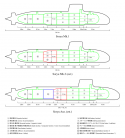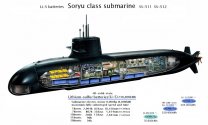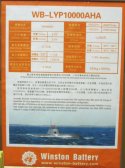Just asking why do you think Soryu has 230 MWh of battery power? I think it is impossible. Even if its batteries have half the energy density of an EV battery and weigh 500 tons, the Soryu's total battery storage would be around 50 MWh. More realistically it should be around 30 MWh. As for why they ditched the AIP is they want Taigei to operate in open-ocean. Low-speed endurance AIP provides is of less use in that environment and AIP provides 0 extra high-speed endurance because of its low power. They ditched it for more lithium-ion batteries for higher high-speed underwater endurance and more diesel fuel for extra range.
There was a specification document with 300Wh/kg and 230MWh for the Australian variant of the Soryu.
That would work out as 766 tonnes in total.
I'm speculating on the battery capacity of the Soryu, but if you've got accurate figures, I'd happy to hear what it is.



